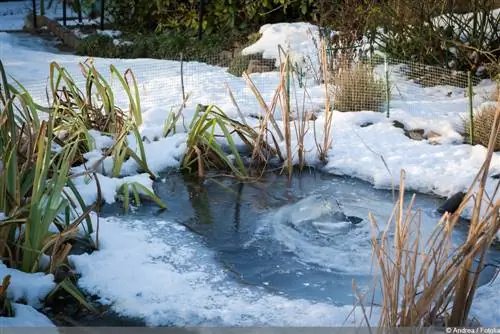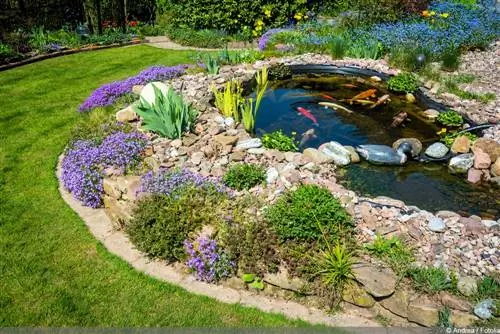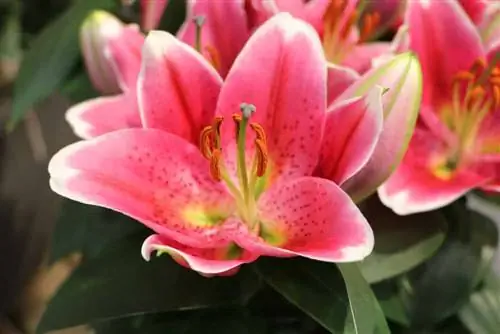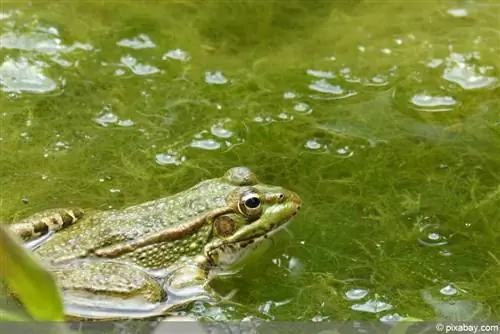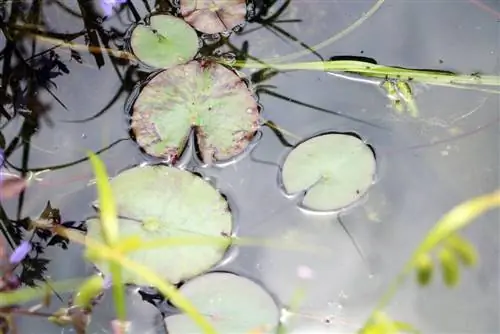- Author admin [email protected].
- Public 2023-12-17 03:39.
- Last modified 2025-01-24 12:45.
In many gardens, the garden pond is an important design element, but its effect only develops through the right planting. A variety of aquatic and marsh plants are available commercially, but not all of them survive the cold season without damage. Whether water lilies and other plants are actually hardy depends not only on their origin, but also on the depth of the water.
The deeper the garden pond, the easier it is to overwinter
A naturally designed garden pond consists of three different zones that are filled with different types of pond plants and are also treated differently during the winter months. Basically, the rule applies: the deeper the garden pond or a certain area, the easier it is to overwinter. Waters that are more than 160 centimeters deep rarely or never freeze to the bottom; instead, temperatures here are still plus even when the outside temperature is more than minus ten degrees Celsius. For this reason, fish and many floating plants overwinter more easily here. Plants from the swamp or shallow water zone, on the other hand, need special protection during the winter months, depending on the species and variety.
Tip:
Some plants in the shallow water zone, such as native water lily species, can be moved to the deep water zone before the onset of winter and survive the cold season there more easily than in shallow water. For this purpose, it is practical not to plant the plants directly in the bottom of the pond, but instead in mesh baskets. This makes it easy to lift them out and move them in the fall.
How to overwinter aquatic plants from mini ponds
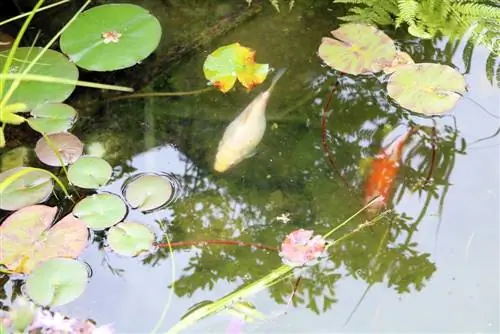
Conversely, of course, the lower the water level, the more dangerous it is for the aquatic plants. Mini garden ponds, which are sometimes set up and planted in pots and planters such as a zinc tub, freeze very quickly to the bottom when there is frost. As a result, even those aquatic plants that, as native species, are accustomed to frost die. However, it is problematic if the rhizomes of the water lilies also freeze and can no longer supply the plant with moisture and nutrients. Therefore, the following applies to mini ponds: Always overwinter them frost-free, but cool at temperatures of less than ten degrees Celsius. If the container is too large and/or too heavy, you can also drain the water to a few centimeters or overwinter the plants and their baskets individually in buckets or larger planters.
Tip:
When overwintering indoors or in a greenhouse, you should always remember that the darker it is, the cooler the ambient temperature needs to be. If the plants overwinter are too warm, their metabolism is stimulated and they quickly suffer from the lack of light. If the winter is rather dark, the temperature should be just above zero.
Not all water lilies are hardy
There are around 50 different species of water lilies worldwide, many of which are native to our latitudes. Others come from the tropics and would not survive a cold winter outside in the garden pond. The best way to overwinter native and therefore hardy water lilies is as follows:
- Lowering to a water depth of at least 60 centimeters
- some species even at a depth of one to one and a half meters
- Removing dead and rotten parts of plants in autumn
If a hardy water lily is in a very small pond less than 60 centimeters deep, you should either move it to a deeper pond or overwinter indoors in a frost-free and cool place. Even with the winter-hardy species, the rhizomes must not freeze through, otherwise the water lily will no longer grow so well the following year.
Tip:
When buying hardy water lilies, pay attention to their origin: Some actually native species are imported from aquatic plant nurseries in Asia, where they of course cannot be hardened accordingly - and do not develop the desired winter hardiness despite their disposition.
This is how hardy pond plants overwinter
Many other typical pond plants are also native to us and have developed their own individual tactics for overwintering. Some - for example cane - are extremely frost-resistant from the start and do not require any special pruning; they should only be cut back in the spring before budding. Others, such as the crayfish claw, sink to the bottom of the pond in late autumn, overwinter there and reappear on their own in the spring. In order for these species to survive the winter, the pond should be deeper than 60 centimeters. Many pond plants form so-called winter buds in autumn, from which they finally sprout again in spring. For this reason, these species, which include waterweed, for example, may no longer be cut back from August onwards - with a late cut you would remove the winter buds and thus prevent new growth.
Preparing your garden pond for winter
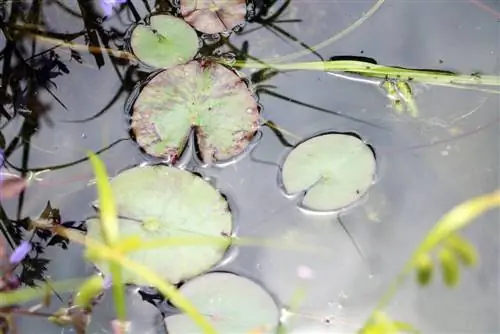
So that your hardy pond plants survive the cold season as well as possible, you should not only winterize the plants, but also the entire garden pond in autumn. This includes the following work:
- Let the water pump run empty and hibernate frost-free
- remove all leaves from the water surface
- remove diseased and rotten plant parts with pond scissors
- remove these from the pond too
- thinning out plant stands that are too dense
- Thinning out reeds
- Remove sludge with a pond sludge vacuum or scoop bucket
- If necessary, use ice preventer
Tip:
Sludge forms from dead plant parts that have sunk to the bottom of the pond. It releases toxic hydrogen sulfide gas, which can be dangerous to fish and plants, especially under ice cover. However, digested sludge makes a very good fertilizer and can also be used in the compost.
Overwinter sensitive pond plants properly
Tropical pond plants that are not hardy should be moved indoors before the first frost. Like non-hardy water lilies, they overwinter frost-free but cool at a maximum of 10 °C. These species are only allowed to go outdoors again after the Ice Saints in May, but then they first have to slowly get used to the sun again. In addition, many plants from the swamp zone are only partially hardy. They can stay outside, but should be moved into deeper water. Here they can easily survive temperatures of minus 10 degrees Celsius and more.
Tip:
Pond plants that have overwintered in the house or greenhouse must be checked regularly. If necessary, you should check the water level because the plants must not dry out under any circumstances. Overwintering in a dark basement is not recommended.


